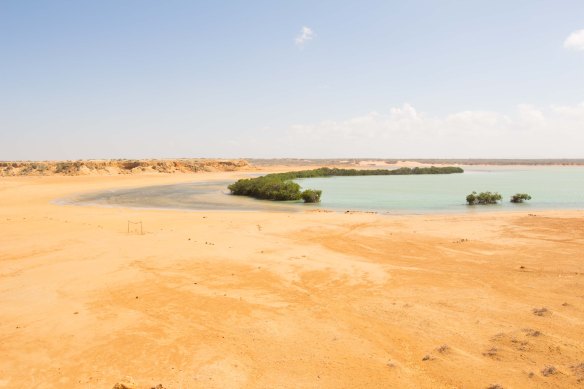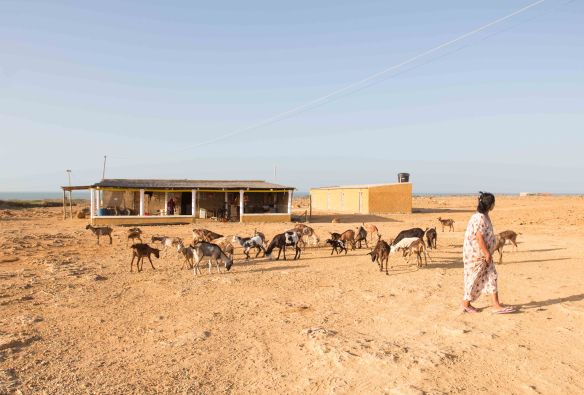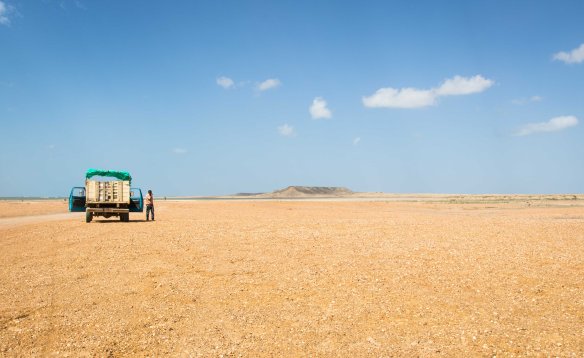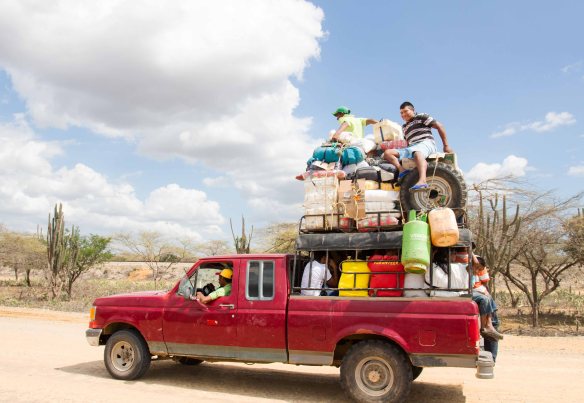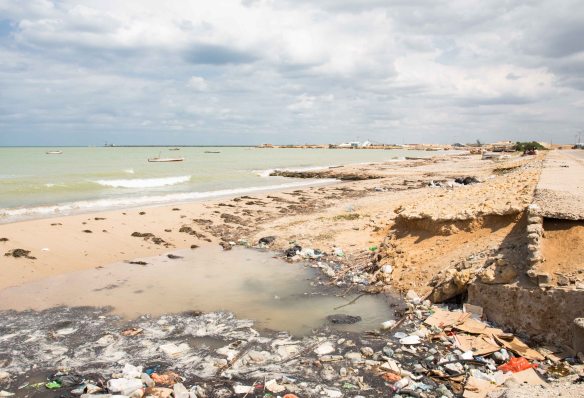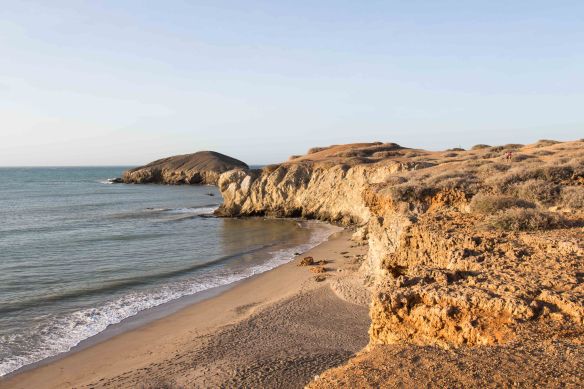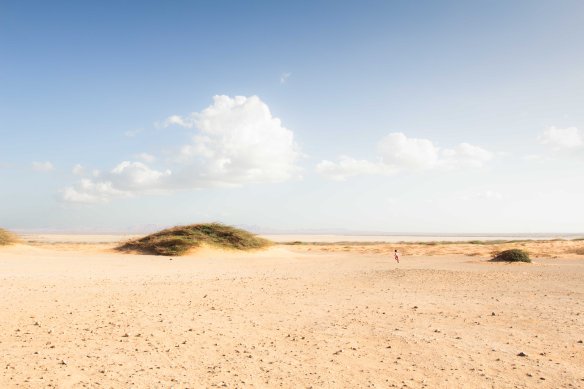
La Guajira, the desert peninsula that separates Colombia from Venezuela, juts boldly into the Caribbean, forming the northernmost tip of South America. It is barren and immense, almost entirely devoid of cities or roads, trees or wildlife. Its only inhabitants, the indigenous Wayuu people, live simply and quietly, sleeping in hammocks and surviving on fish and goats.
La Guajira had long intrigued me and, when I finally visited this past month, I discovered a hauntingly beautiful land of vast parched plains, undulating sand dunes and a wailing wind. Occasionally, life appeared, a shock of color amidst a monotone desert landscape. Wayuu women with sunbaked skin in billowing red dresses. A colony of pink flamingos in a bay of verdant islands. A dazzling green sea.
Beyond its eerie charms, La Guajira contained an ever-present sadness. A steady trickle of trash littered its arid plains like a metallic weed. Stunted dehydrated children, as young as three or four, set up road blocks with flimsy strings to demand water from passing jeeps carrying tourists. The only dwellings, feeble wooden shacks snarled by cacti, quivered in the face of violent sea winds. Cries of desperation in a remote peninsula long forgotten by the Colombian government and neglected by its own authorities.
